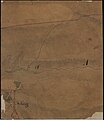Syburg
|
Syburg
City of Dortmund
Coordinates: 51 ° 25 ′ 32 ″ N , 7 ° 29 ′ 14 ″ E
|
|
|---|---|
| Height : | approx. 220 m above sea level NHN |
| Area : | 8.12 km² |
| Residents : | 1518 (December 31, 2018) |
| Population density : | 187 inhabitants / km² |
| Incorporation : | August 1, 1929 |
| Area code : | 0231 |
| Statistical District : | 55 |
|
Location of Syburg in Dortmund
|
|
|
View from the Vincketurm to Syburg
|
|
Syburg is the statistical district 55 and at the same time the southernmost part of the city of Dortmund . It is located in the Hörde district . Located on the ridge of the Ardey Mountains , it borders the towns of Schwerte , Hagen and Herdecke . About 1500 people live on an area of 670 ha. The highest point in the district is the Klusenberg with a height of 254.33 m. Syburg and especially its eastern district of Buchholz are popular, rural and particularly expensive residential areas in Dortmund. The place is mainly characterized by single-family houses.
history
Originally an independent municipality in the Westhofen district , Syburg was incorporated into the city of Dortmund on August 1, 1929 and added to the Wellinghofen administrative district. Since January 1, 1975, the district, enlarged by Buchholz, which originally belonged to Westhofen, has belonged to the Hörde district.
population
On December 31, 2018, there were 1,518 inhabitants in Syburg.
Structure of the Syburg population:
- Minor quota: 18.2% [Dortmund average: 19.4% (2016)]
- Old age quota: 37.5% [Dortmund average: 30.0% (2016)]
- Proportion of foreigners: 12.0% [Dortmund average: 18.2% (2018)]
- Unemployment rate: 3.5% [Dortmund average: 11.0% (2017)]
The average income in Syburg is around 105% above the Dortmund average. This makes Syburg the second richest district in Dortmund after Lücklemberg .
Population development
| year | 1987 | 2003 | 2008 | 2010 | 2013 | 2016 | 2018 |
|---|---|---|---|---|---|---|---|
| Residents | 1583 | 1483 | 1511 | 1476 | 1459 | 1532 | 1518 |
Attractions
Syburg has always been an excursion destination for the Dortmund population. At the beginning of the 20th century, a tram line connected Hörde with Syburg. A mountain railway led from the tram terminus at Haus Weitkamp to the top of the Hohensyburg.
The following sights can be found in Syburg today:
- Hohensyburg castle ruins
- Kaiser Wilhelm Monument
- Vincketurm
- Casino Hohensyburg
- Church of St. Peter in Syburg
- Hohensyburg natural stage
- Syburger Bergbauweg with the Graf Wittekind visitor mine
- Husen Castle
- House Husen
South of the Hohensyburg on the city limits to Hagen lies the Hengsteysee in the Ruhr valley . To the north of the district in the Reichsmark there is a golf course and the Wannebachtal excursion destination . In Syburg there is a rich selection of gastronomic establishments as well as the only campsite in Dortmund's urban area.
In the 1990s and 2000s, the so-called Haunted House Hohensyburg , around which numerous rumors, legends and ghost stories were entwined, attracted “horror fans” who illegally entered the secluded property and sometimes forcibly entered the vacant property House from the 19th century. The "horror tourism" caused in particular by countless posts in internet forums etc. led to considerable harassment of the residents and resulted in hundreds of operations by the local police. In 2009 the dilapidated building was demolished under pressure from the city of Dortmund.
Kaiser Wilhelm Monument on the Hohensyburg , above the Ruhr
Nature reserve Ruhr slopes Hohensyburg
1990 by the landscape plan Dortmund-South the 42.83 hectare large nature reserve Ruhr escarpments Hohensyburg reported. The nature reserve (NSG) consists of three sub-areas and extends to the city limits of Dortmund. In the NSG, rocks come to light in the form of extensive ledges, edges and individual rocks. The highest rocks reach a maximum height of ten meters. In a few places, individual rocks protrude from the crown of the adjacent low and stunted mixed deciduous forests. In the NSG there are old, abandoned and re-forested quarries. Because of the occurrence of the wall lizard and the black- stemmed striped fern , the NSG has herpetofaunistic and floristic-vegetation-historical importance.
Web links
- Syburg
- Images from Syburg around the 19th century
- Syburg in the Westphalia Culture Atlas
Individual evidence
- ↑ Population figures in the statistical districts on December 31, 2018 (PDF)
- ↑ Stephanie Reekers: The regional development of the districts and communities of Westphalia 1817-1967 . Aschendorff, Münster Westfalen 1977, ISBN 3-402-05875-8 , p. 286 .
- ↑ Martin Bünermann, Heinz Köstering: The communities and districts after the municipal territorial reform in North Rhine-Westphalia . Deutscher Gemeindeverlag, Cologne 1975, ISBN 3-555-30092-X , p. 124 .
- ↑ Population structures annual report 2016 (PDF file)
- ↑ Population structures annual report 2016 (PDF file)
- ↑ Nationalities in the statistical districts as of December 31, 2018 (PDF file)
- ↑ Unemployment rates by statistical district on June 30, 2017 (PDF file)
- ↑ Yvonne Dziabel: "Haunted House" in Dortmund. Assassination and a Headless Horseman ( Memento from August 22, 2010 in the Internet Archive ). In: Ruhr Nachrichten of October 30, 2009; Retrieved October 12, 2011.
- ^ "Syburg" nature reserve (DO-018) in the specialist information system of the State Office for Nature, Environment and Consumer Protection in North Rhine-Westphalia










